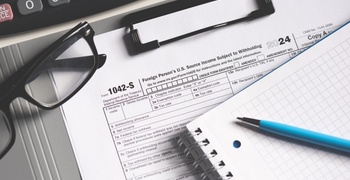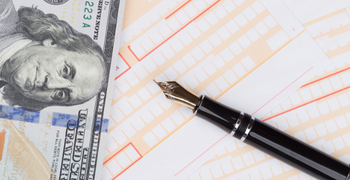
What importers need to know about Entry Type 86 low-value shipments
Update, October 31, 2025: The United States suspended the de minimis exemption for China and Hong Kong on May 2, 2025, and for all other countries effective August 29, 2025. Consequently, U.S. Customs and Border Protection no longer accepts Entry Type 86.
Global ecommerce continues to grow steadily despite inflation and rumblings of recession. Worldwide online retail sales are on track to reach $6.9 trillion in 2025, an astonishing figure given many international online sales are of low value. In the United States alone, Customs and Border Protection (CBP) now processes more than 1 billion de minimis packages a year.
To streamline low-value imports, close to 90 countries provide a customs duty exemption for low-value ecommerce shipments. Entry Type 86 is the customs declaration exemption for low-value imports entering the U.S.
What is Entry Type 86?
Entry Type 86 is a customs entry type introduced by U.S. CBP in September 2019, as a test. Prior to the establishment of Entry Type 86, low-value imports needed to be entered through a formal entry process or the more complex informal Entry Type 11.
There are dozens of different entry types for customs because goods of varying values enter the U.S. by different methods for a host of reasons. Entry Type 86 is allowed under Section 321 of the Tariff Act of 1930, which governs de minimis.
The de minimis threshold is the maximum value of goods that can be imported into the U.S. duty free. Previously $200, the de minimis threshold has been $800 since March 2016.
Understanding Entry Type 86 for importers
Although free from customs duty, Section 321 low-value shipments remain subject to oversight by CBP. Entry Type 86 requires electronic filing of the necessary import documents. This allows CBP to ensure regulatory requirements are met while expediting clearance.
Entry Type 86 also provides expedited entry for certain low-value shipments subject to Partner Government Agency (PGA) requirements, like toothbrushes. Because they enter the body, toothbrushes must be cleared by the Food and Drug Administration. Failure to obtain approval by the necessary PGA can lead to delays or even rejected shipments.
But not all goods are allowed to enter the U.S. under Entry Type 86. Agricultural products, alcohol, and tobacco products are among the products not eligible for Entry Type 86, as is merchandise subject to quota.
How to file Entry Type 86
Once you determine your imports meet the $800 de minimis threshold and qualify for Entry Type 86, the entry must be filed with CBP. Under the Entry Type 86 test, the owner, purchaser, or a licensed customs broker is required to file the entry.
Entry Type 86 imports must be filed electronically through CBP’s Automated Commercial Environment (ACE) portal. The following data is required:
- Bill of lading or the air waybill number
- Consignee name and address
- Country of origin
- Entry number
- Fair retail value in the country of shipment
- Importer of record (IOR) number of the owner, purchaser, or broker (required when the shipment is subject to PGA data reporting requirements)
- Planned port of entry
- Quantity
- Shipper name, address, and country
- Harmonized System code (HS code)
When Entry Type 86 was introduced, this information could be entered at any time prior to the arrival of the cargo, upon arrival, or up to 15 days after arrival of the cargo. Entering it early would expedite the import process, but procrastinators could count on the extra 15 days.
Effective February 15, 2024, the ACE Entry Type 86 test is “upon or prior to arrival.” The extra 15 days are no longer available
“The traditional entry timeframe, allowing filing up to 15 days after arrival of the cargo, has proven to be inconsistent with the expedited process envisioned for the ACE Entry Type 86 Test,” explains a CBP notice. “As a result, CBP is amending the test to require that the entry type 86 must be filed prior to or upon arrival of the cargo.”
It’s the importer’s job to ensure CBP receives accurate information when required. Per the CBP’s Ecommerce frequently asked questions, “It is the responsibility of the importer to use ‘reasonable care’ to ‘enter,’ ‘classify,’ and ‘value’ the goods and provide any other information necessary to enable CBP to properly assess duties, collect accurate statistics, and determine whether all other applicable legal requirements are met.”
Shipments determined to exceed the $800 de minimis threshold won’t qualify for the low-value customs exemption and cannot be filed under Entry Type 86. Instead, the shipments must go through Type 01 formal entry or the complex informal Type 11.
What is the role of HS codes in Entry Type 86?
As you (hopefully) know if you sell and ship goods internationally, HS codes are part of a global system used to identify merchandise shipped across international borders. HS codes are also known as a Harmonized Tariff Schedule (HTS) or Harmonized Tariff Schedule of the United States (HTSUS) code.
More than 200 countries use the HS system. The first six digits of the code are the same across all of these countries; the remaining digits are unique to individual countries, like the United States. This is one reason assigning the proper HS code to a product is arduous.
There are millions of codes to choose from: A 100% cotton shirt has a different code than a 50% cotton shirt; a sandal made with leather has a different code than a sandal made with leather and cloth; and so on. Unfortunately, shipments lacking the proper HS code can be delayed at customs or even rejected.
HS codes aren’t required for low-value imports into many countries. However, HS codes are necessary for low-value imports into the U.S. under Entry Type 86. This is the biggest difference between Entry Type 86 and many other clearances — for example, through a container freight station (CFS) or an express consignment carrier facility (ECCF).
Yet there are downsides to shipping via CFS or ECCF, too.
Shipping via CFS
Shipping through a CFS doesn’t require HS codes. However, it’s a delayed process.
When a shipment arrives, the broker must secure physical release from the local customs office, which operates Monday to Friday. Customs officials process manifests individually by batch, and peak period can extend the time of review. Once approved, the broker can release the shipments from their warehouse. The process can take days. In the meantime, goods pile up, blocking additional shipments.
Shipping via ECCF
ECCF clearance is electronic and immediate: CBP officials have offices in these express consignment carrier facilities and examine shipments upon arrival, seven days per week.
Yet like most expedited processes, there’s a cost: $1.07 per airway bill, plus broker fees. It’s also not available to everyone. Only a limited number of couriers, including DHL and FedEx, have a license to clear via ECCF.
The pros and cons of using Entry Type 86
In a way, Entry Type 86 combines the best aspects of CFS and ECCF: It doesn’t have the ECCF expedited fee and it’s fast, even for products requiring PGA approval. Upon receipt of the necessary data, CBP releases the shipment for distribution (all merchandise is released conditionally and subject to recall). If the information CBP receives prior to the arrival of a shipment doesn’t raise any flags, there may be no delays at all.
The trade-off is that Entry Type 86 requires an HS code. Fortunately, assigning HS codes can be automated. Avalara Tariff Code Classification allows importers to swiftly assign the proper HS code to each shipment.
Is the future of Entry Type 86 at risk?
With the flow of low-value imports into the U.S. showing no signs of ebbing, there are rising concerns that Entry Type 86 is being exploited. Consequently, CBP has intensified scrutiny of low-value imports and the customs brokers that process them.
“CBP is taking action to ensure compliance and minimize the exploitation of the small package, or de minimis, environment,” CBP Acting Commissioner Troy Miller announced on May 31, 2024. “To date, CBP has suspended multiple customs brokers from participating in the Entry Type 86 Test after determining that their entries posed an unacceptable compliance risk.”
Bad actors aren’t just looking to evade taxes; Miller says they’re “exploiting the de minimis environment to move materials used to produce synthetic drugs — like fentanyl and its analogues — and other contraband into the United States.”
For this and other reasons, Congress is looking to restrict and screen Entry Type 86 imports. Various bills and proposals have been introduced, including but not limited to:
The Import Security and Fairness Act, which would exclude imported articles from non-market economy countries or countries on the priority watchlist from receiving de minimis treatment, and also require CBP to collect additional information on merchandise that may qualify for de minimis treatment (H.R. 4148, S. 2004)
The End China’s De Minimis Abuse Act, which would prohibit certain U.S. imports from receiving de minimis treatment and establish related civil penalties (H.R. 7979)
The Biden-Harris Detect and Defeat Counter-Fentanyl Proposal, which would give border officials tools to more effectively track and target small-dollar shipments
Momentum for some sort of policy change seems to be building. On July 8, 2024, House of Representatives Speaker Mike Johnson said he hopes Congress will pass legislation to “rein in the de minimis privilege.” And on August 8, a bipartisan group of lawmakers including veterans like Senator Ron Wyden of Oregon and Senator Susan Collins of Maine unveiled a bill that would tighten import requirements for low-value packages.
According to Supply Chain Dive, experts “believe some sort of change to the law will happen soon.” Exactly what that will look like is as yet unknown, but new policies will almost certainly impact compliance for importers and ecommerce businesses. When we learn more, we’ll let you know from the Avalara Tax Desk.
As international import volumes increase, so will scrutiny from customs and government authorities — especially on shipment data. A clear example of this is U.S. CBP’s heightened focus on de minimis imports. The right tools enable sellers, shippers, and compliance teams to adhere to the rapidly changing trade environment and enforcement standards.
Avalara offers a range of tariff code classification solutions that scale to meet your business’s needs. Schedule a call today for more details.
This post has been updated to reflect new developments. It was originally published on June 29, 2020.

The Avalara Tax Changes midyear update is here
Trusted by professionals, this valuable resource simplifies complex topics with clarity and insight.
Stay up to date
Sign up for our free newsletter and stay up to date with the latest tax news.














